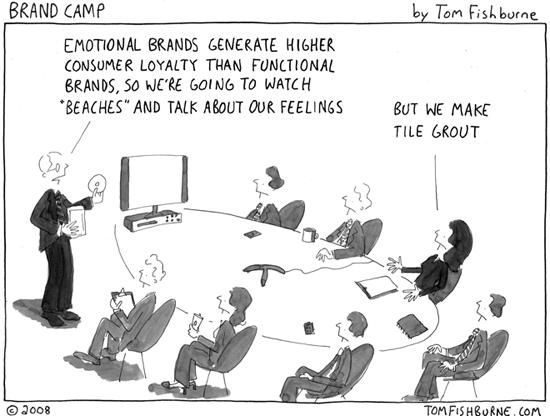Brands: Managing the Message - May 2011
By Dick Whitney
A brand is more than a logo, and it won’t run on autopilot, no matter the visibility and success of past campaigns. And like the product itself, it needs to be maintained. Brands are the most powerful and sustainable wealth creators in the world, as long as the shepherds of the brands are creative, tenacious, protective and consistent in their management, investment and growth.
When volume is down and raw material prices are on the rise, the focus of producers shifts to short-term issues while the broader vision of products and brands are shunted to the back burner, and the easy choice is to pull back on the “non-essential” advertising expense. But it’s a hazardous strategy, because this short-sightedness leads to a lack of consumer preference and shifts the power either further down the channel or into another product category. Those who hold true to their business and brand strategies are the ones who come out with the stronger position and the bigger share of the business.
Also, since flooring is often a non-essential, deferrable purchase, advertising one’s brand also helps keep the entire category in the minds of consumers as a rewarding option for their disposable income.
In the flooring industry, as evidenced in the chart below, there are only a handful of manufacturers (or their brand stewards) that invest in consumer advertising, and that number has fallen considerably in the last few years. In fact, manufacturer spending on consumer brand awareness is almost half what it was two years ago, and several prominent flooring producers have entirely abandoned their efforts to maintain brand awareness.
If manufacturers allow the big box retailers and category killers to build stronger consumer awareness than they themselves have, they risk losing mindshare and preference to the consumer, and that allows downstream brands like Bellawood and TrafficMaster to control the market. Once that happens, prices rise to the top as the most influential differentiator and margins start to erode.
Brand Focus
One of the reasons that classic and leading brands (of any size) have been so successful is how completely they have delivered clarity and consistency, driven by leadership.
One key element of a branding strategy is the underlying communications plan. The plan must reflect what is required in a brand position, the audience’s preferred mode of communication, and the firm’s desired role and participation in the audience’s behavior.
A brand with no clear vision or commitment has no clear future. There are no guarantees, but chance favors the best prepared. A significant percentage of manufacturers do not have formal brand strategies, and they don’t seem to understand that today’s consumers are looking for brands that will help them make responsible and rewarding decisions. It’s evident that some are acting without clear, intentional strategies—just doing something because they feel they should, but without an understanding of how the process really works.
The more sophisticated companies, those with a formal or even an informal brand strategy, see their brands as a promise to their customers. Those without a brand strategy—and some of the more informal planners—simply see brand as a name or don’t even acknowledge brand as an important variable.
Neither start-ups nor existing companies of any size should approach the branding issue lightly. Corporate brands reflect the intrinsic nature and history of the company. They derive from the complex workings of internal corporate goals and external marketplace needs.
Firms should measure the effectiveness of their brand strategies. In addition to supporting qualitative corporate goals, brand strategy must also support a price premium or marketshare objectives leading to improved returns for investors. Simply tracking brand awareness is not a sufficient measure of a brand strategy’s success.
If you don’t plan and invest in the future you want, you get the one that shows up. It’s a leadership issue that goes beyond today’s operating plans and initiatives, which can too often get in the way of long-term planning.
Copyright 2011 Floor Focus
